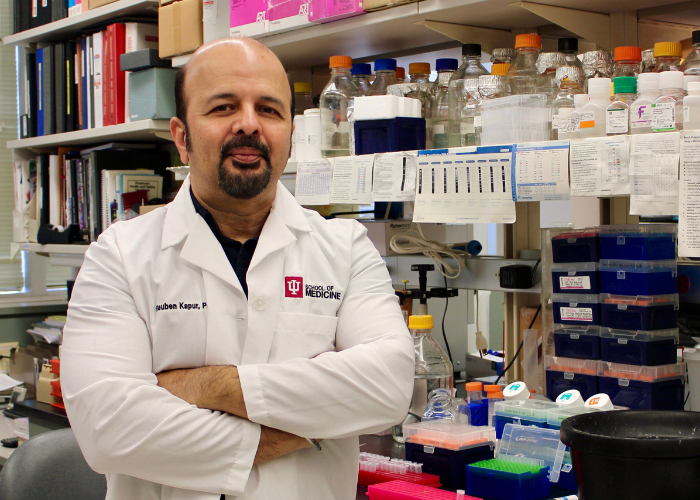Newly Developed Inhibitor Targets Acute Myeloid Leukemia
 Indiana University School of Medicine researchers and their collaborators have uncovered molecular insights expected to enhance treatment options for acute myeloid leukemia (AML). With a new chemical compound engineered to overcome drug-resistant gene mutations not targeted by current treatments, the researchers aim to provide a new alternative with longer-lasting effects and improve outcomes for future patients battling this aggressive disease.
Indiana University School of Medicine researchers and their collaborators have uncovered molecular insights expected to enhance treatment options for acute myeloid leukemia (AML). With a new chemical compound engineered to overcome drug-resistant gene mutations not targeted by current treatments, the researchers aim to provide a new alternative with longer-lasting effects and improve outcomes for future patients battling this aggressive disease.
Although it’s considered a rare cancer, acute myeloid leukemia is one of the most common types of leukemia in adults. Individuals with AML have genetic mutations that cause an excess amount of abnormal blood cells, and their prognosis worsens if left untreated. The five-year survival rate for adults with AML is about 30%.
In a recent study published in the Journal of Clinical Investigation (JCI), researchers identified inhibitors, or blocking agents, that target FLT3 gene mutations, the most common mutation in acute myeloid leukemia.
“Despite the widespread occurrence and clinical importance of FLT3 mutations in causing AML, treatment options tailored to this genetic anomaly are scarce,” said Baskar Ramdas, PhD, assistant research professor of pediatrics at the IU School of Medicine and co-first author of the study. “Our goal was to identify new and powerful inhibitors targeting the mutations, particularly those resistant to currently approved FDA options.”
DA-approved drugs like quizartinib and crenolanib are currently used to target FLT3 mutations, but some leukemia patients develop resistance to these treatments. In their latest study, the scientists identified two new inhibitors that effectively target FLT3 mutations, including secondary mutations that were previously drug resistant.
“Pinpointing where other treatments were causing resistance or relapse led to the development of a new lead compound that will hopefully be a more effective drug in the long run,” said Reuben Kapur, PhD, director of the IU School of Medicine’s Herman B Wells Center for Pediatric Research, co-leader of Hematopoiesis and Hematologic Malignancies program at the Indiana University Melvin and Bren Simon Comprehensive Cancer Center and co-author of the study. “Our preclinical study results have shown incredible promise, and we’re excited to keep the momentum going so AML patients can have more resilient options.”
The study’s co-author Herman Sintim, PhD, Richard B. Wetherill Professor of Chemistry and Drug Discovery and Distinguished Professor in Chemistry in the James Tarpo Jr. and Margaret Tarpo Department of Chemistry at Purdue University engineered the patent-pending compound named HSN748 for impending clinical use.
Sintim said the strong preliminary data made possible by collaboration between Purdue and IU subsequently attracted funding from the National Institutes of Health. This support enables the evaluation of HSN748 across different cancer models and enhances its prospects for further development funding. These next steps will be primarily managed by the compound’s license holder KinaRx, an early-stage biotechnology company that aims to develop innovative solutions to cancers that have become resistant to existing drugs and get them into the market. Sintim is also the co-founder of KinaRx, and will continue to work closely with Kapur, a scientific advisory board member at the company.
“This academic-industry collaboration between KinaRx, Purdue and IU will continue as we continue determining the mutational backgrounds that are most sensitive to our lead compound HSN748,” Sintim said. “As the drug progresses to the next phase of clinical trials, the company would like to increase the collaboration to clinicians, including leukemia specialists at IU.”